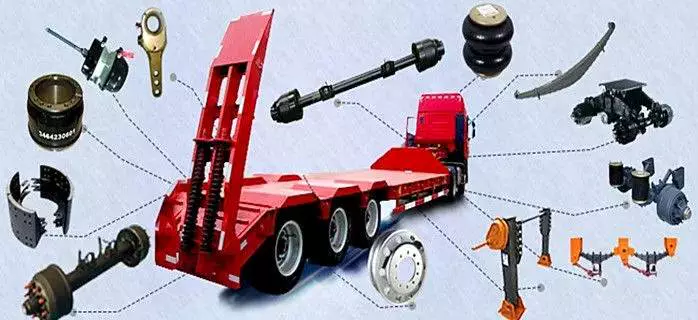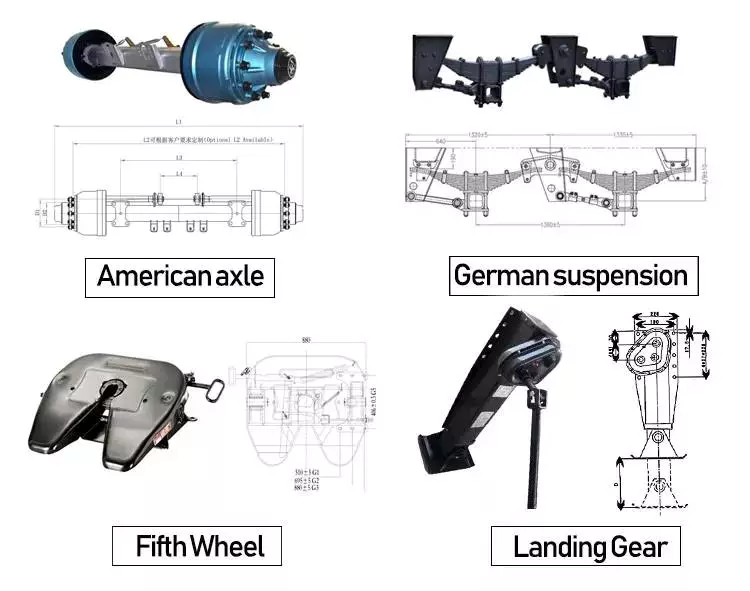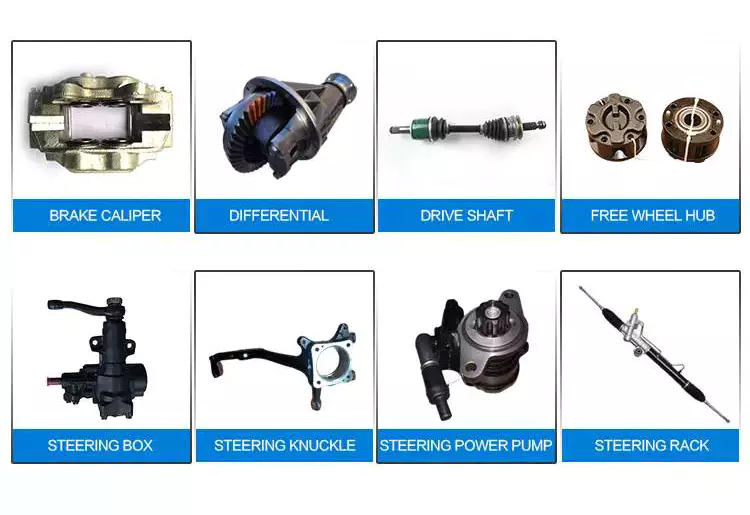Product Description
Product Description
1) Full torsion axles and half torsion axles for boat trailer,utility trailer ,landscape and work trailer and other light duty trailers.
2) Track length can be met as per your request.
3) With or without brake is optional.
4) Capacity options: From 0.5T to 2T.
5) Surface finishing: Black Painting, Galvanized. Dacromet.
6) We could manufacture according to your dimension drawing.
Please be noted: Torsion Axles shouldn’t be used in tandem or triple.
Product Parameters
| Model No. | Capacity (kg) |
SC (mm) |
TR (mm) |
LP (mm) |
Axle Tube (mm) |
Brake Szie | Studs | P.C.D | B.C.D | Torque arm angle |
Offset center of the arm |
| TL-NP0.5 | 500 | 1300 | 1700 | 1825 | 60×60 | 10″ | 5-M12x1.5 | φ114.3 | φ60 | 23° | 137 |
| TL-NP0.75 | 750 | 1300 | 1700 | 1825 | 60×60 | 10″ | 5-M12x1.5 | φ114.3 | φ60 | 23° | 137 |
| TL-NP1.0 | 1000 | 1300 | 1700 | 1825 | 70×70 | 10″ | 5-M12x1.5 | φ114.3 | φ60 | 23° | 137 |
| TL-NP1.5 | 1500 | 1300 | 1730 | 1855 | 80×80 | 10″ | 6-M12x1.5 | φ114.3 | φ60 | 23° | 160 |
| TL-NP2.0 | 2000 | 1300 | 1730 | 1855 | 90×90 | 12″ | 6-M12x1.5 | φ139.7 | φ84 | 23° | 160 |
—————————————————————————————————————————————————————————————————————————————————————————————
More Types of Arm:
—————————————————————————————————————————————————————————————————————————————————————————————
Structure of Torsion Axle:
Packaging & Shipping
Our Advantages
Company Profile
HangZhou Tsingleader Industry Co., Ltd. is located in the beautiful HangZhou city. We specialize in the production of trailer parts, axle and transmission of engineering machinery and special engineering and agricultural machinery.
Over the past years, Tsingleader Industry has invested 4 manufacturing plants in China. Following the principle of “quality assurance, abiding by the contract, reciprocity, mutual benefit and first-class services”, we have won the trust from our clients both at home and abroad.
Our annual sales amount reaches USD 5 million and our products have been exported to North and South America, Europe ,Africa,South Asia and the Middle East.
We sincerely hope to become your earnest business partner and your contact will be warmly welcomed.
| After-sales Service: | All Liftcycle |
|---|---|
| Warranty: | 1 Year |
| Type: | Axle |
| Certification: | ISO/TS16949, CCC, DOT, ISO, CE |
| Loading Weight: | 3500lbs |
| ABS: | Without ABS |
| Samples: |
US$ 120/Piece
1 Piece(Min.Order) | |
|---|
| Customization: |
Available
| Customized Request |
|---|

The Different Types of Axles
An axle is the central shaft of a gear or wheel. Axles are either fixed to the wheels or fixed to the vehicle. In some cases, they rotate together with the wheels and vehicle. The axle may also include bearings and mounting points. There are many types of axles, and it is important to understand the difference between each type.
Transaxle
The transaxle is the single mechanical device that combines the functions of a car’s differential, axle and transmission. It’s produced in manual and automatic models. A manual version is the preferred one for everyday driving, while an automatic one is more efficient in preventing vehicle damage. Here are some basics about the transaxle.
Transaxles are essential components of a car’s drivetrain, and any problems can cause major damage and leave the driver stranded. Transaxles include the transmission and the differential, which transfer the engine’s power to the wheels. Taking the time to check the transaxle is important to ensure that everything is functioning properly.
The transaxle is a very complex machine that combines the functions of the final drive and the transmission into one compact unit. The transaxle is a very versatile piece of automotive technology, and is an essential component of a front-wheel-drive car. In addition to conventional front-wheel-drive vehicles, many modern rear-wheel-drive vehicles use a transaxle to provide more even weight distribution.
The first American car to use a transaxle was the Cord 810 in the early 1920s. It was well ahead of its time, but was unsuccessful. For many years, the front-wheel drive automobile was absent from the United States automotive scene. It wasn’t until the 1960s that a front-wheel drive automobile re-emerged. A front-wheel-drive automobile, known as a transaxle, was the first to reach the market, and it’s not the only car to use this gearing.
A transaxle is a good option for vehicles with an extreme amount of torque. This system can handle powerful engine designs while keeping weight in the engine bay. It is not a perfect solution for all vehicles, however. In some vehicles, the extra weight added to the engine bay will affect the performance. The added weight will reduce traction. In addition, a transaxle mounts behind the engine, which adds weight to the rear.
Transaxles are the primary part of vehicles that have front-wheel drive. Their purpose is to transmit power from the engine to the drive wheels. The front-wheel-drive assembly had 2 short axles with complicated ball joints.
Full-floating axle
A full-floating axle is different from a semi-floating axle in several ways. A semi-floating axle is used for rear wheel drive cars, where it has a bearing mounted in the axle shaft. This axle supports the vehicle’s weight and transmits the drive torque from the transmission to the wheels. However, a semi-floating axle’s load capacity is limited by the size of the axle bearing. A full-floating axle, on the other hand, has the bearing mounted on the outside of the axle tube. The bearing is the only part of the axle that supports the vehicle, and the hub and bearing assembly are held together by a large nut.
The drive axle on a full-floating axle is splined at both ends so that it can easily be removed from the rear of a vehicle without removing the wheel. This type of axle makes it possible to change gears quickly and easily. Because of this, it’s not necessary to remove the wheels and tires in order to replace the axle. Instead, a common tool used to remove the axle from the wheel hub is an axle wrench.
Full-floating axles are more common in heavy-duty vehicles. The ability to carry heavy loads without causing the axle to break is a big advantage to full-floating axles. These axles require less maintenance and require less bends than traditional axles and may even be worth the extra investment if you have a heavy load to carry.
A full-floating axle allows the driver to change a broken axle shaft without having to remove the entire wheel. A full-floating axle will also allow the driver to remove the axle shaft without having to take off the wheel. Full-floating axles are also more durable than semi-floaters, which have weight resting on the axle tubes and housing.
While a full-floating axle is more expensive to manufacture, it is better for heavier vehicles that carry heavy loads. It is better to choose a full-floating axle if you have a heavy load or plan on towing.
Three-quarter floater
A three-quarter floating axle is a type of floating axle that’s a compromise between the full and semi-floating types. Its bearings are located on the axle casing rather than on the hub, which means that it’s less susceptible to axle breakdown. However, it’s not as robust as a full floating axle.
This design combines the benefits of fully-floating axles with the simplicity of a semi-floating axle. Instead of having multiple wheel bearings, a single wheel bearing is installed in the center of the hub. The hub is then keyed rigidly to the axle shaft, providing a connecting connection and maintaining wheel alignment.
While a full-floating axle is the most common style of truck axle, you may see the three-quarter floater on the side of a pickup. It was common for 3/4-ton Gms to use these axles until the 1980s. Dodge and Ford also used a semi-float axle called a Dana 60. The difference between the two types of axles is the amount of support provided by the axleshaft and hub, and the number of lug nuts on the axleshaft and hub are different.
The three-quarter floater axle drive assembly of the present invention is illustrated in FIG. 1. The axle housing comprises an elongated axle tube 12, a hub member 30, and a hub shaft 16. A hub member 30 is rotatably supported on the axle tube 12 by an anti-friction bearing assembly 42. The axle shaft is retained in place by a domed plate 26.
This axle design has two main advantages. First, it transfers the weight of the vehicle to the axle casing. It also helps transfer the driving torque and side thrust to the wheel. This type of axle also has a differential cross shaft, which limits inward axial movement of the axle shaft.
Dead axle
A Dead axle is a structural component that supports the rear wheel of a vehicle. It can either be straight or angled and is located behind the drive axle. Depending on the vehicle, the dead axle may be steerable. Tag axles are also common on agricultural equipment and certain heavy construction machinery. They are also known as lazy axles because they only contact the ground when a vehicle is carrying a significant load, thus saving tire wear. Dead axles may be rigid or flexible.
Some rear dead axles can also be configured as an air tank. The air is taken in and out of the rear dead axle through the port portions of the rear axle. This can reduce the size of the air tank. For this reason, it is a preferred design for rear dead axles. While most vehicles are equipped with two axles, the rear axle can be used to accommodate cargo.
FIG. 1 is a schematic plan view of a vehicle with two rear axles. The front axle is called the drive axle and the rear dead axle is called the dead axle. These components are located on a truck body frame. There are also battery and fuel tanks. They are used to distribute driving force from the front to rear wheels.
An axle is a crucial component of a vehicle. It transfers power from the engine to the wheels. A live axle is connected to the drive shaft and transmission, while a dead axle receives no direct power. This is the main difference between a live and dead axle. Although a dead axle is not as useful as a live one, it is still essential to understand what drives a car.
Dead axles are used in many vehicles for different purposes. Many large trucks are fitted with several of them for load bearing purposes. They also help distribute weight.

editor by CX 2023-05-05